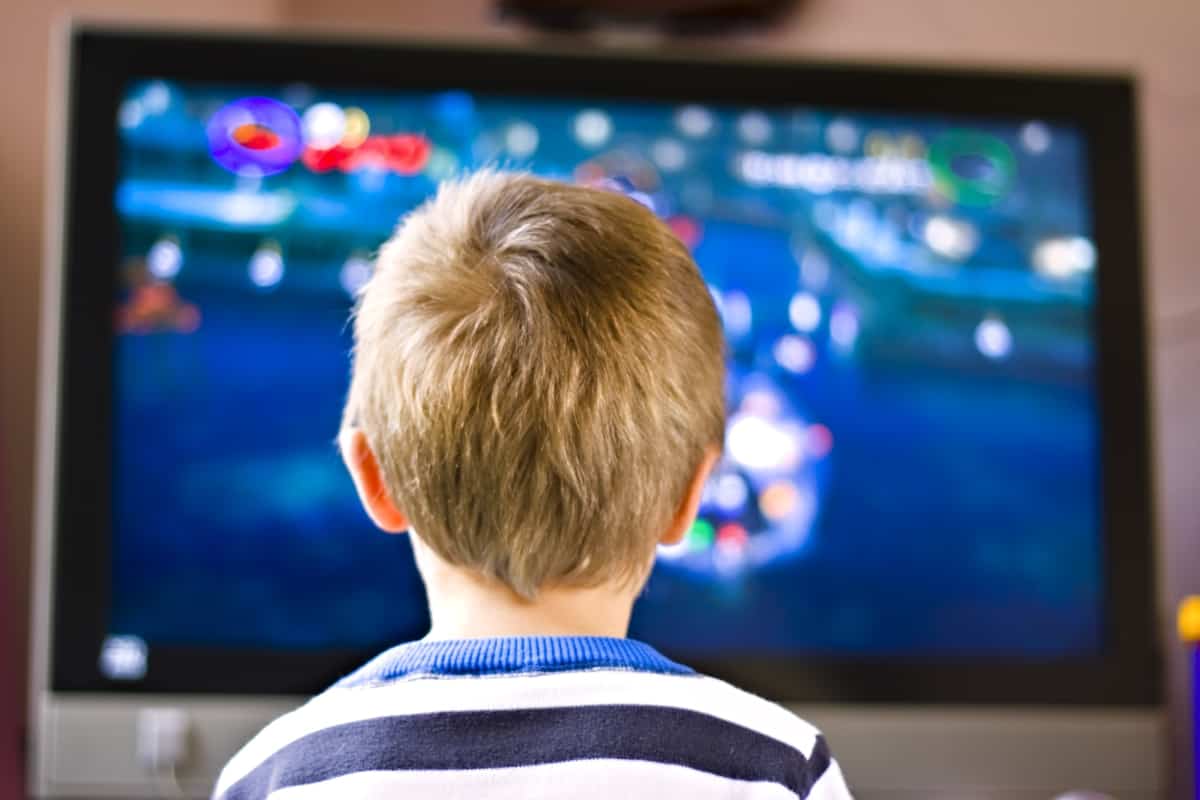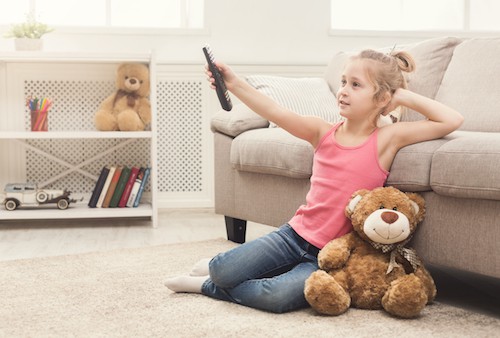TVs in Your Kids’ Bedrooms – Navigating the Media Jungle

There are so many smartphones, tablets, or TVs in kids’ bedrooms these days- but are they a good idea? Here are some things to consider when thinking about extra screen time in the bedroom.
Fewer TVs in Kids’ Bedrooms
Did you know that the number of televisions in US households has gone down since 2009? That’s what a recent study by the U.S. Energy Information Administration has shown.Why? Instead of watching TV, we’re consuming media on our smartphones and tablets. Moreover, on-demand content platforms like Netflix and Amazon Prime make it easier to watch entertainment content anywhere. However, US children spend up to 60 hours per week in front of a screen of any kind. These numbers are probably even greater during the days of COVID-19!In other words: People watch these modern screens just as much, if not more than they used to watch traditional TV. And they’re mostly viewed by children in the privacy of their own rooms- which makes it harder for parents to monitor.That’s why, for this article, we’ll consider smartphones and tablets to be just like TVs in children’s bedrooms. So when we say “TV” just consider any electronic device where you could watch TV. We’ll tell you factors to consider if you decide to allow your child to use these devices in their bedrooms.

Screen Time in the Digital Age
In the age of digital media, our children are constantly exposed to these hidden TVs. They play with smartphones, watch video clips on tablets, and are fascinated by the big screens in shopping malls. It’s important to realize that all those small moments count as screen time. In fact, a report by the Kaiser Family Foundation showed that the average child spends more than seven hours in front of a screen per day! This number is noteworthy because too much screen exposure can have negative effects on children’s brains.To help parents find their way through the media jungle, the American Academy of Pediatrics (AAP) has released some guidelines. For example, they recommend that children younger than 18 months only be exposed to high-quality screen media, if at all. Also, they advise parents to watch together with their kids. This helps children connect the on-screen events to the real world. It also supports you in your ability to place clear limits on screen time. So you might want to think about prohibiting any type of TV in your children’s bedrooms.

Tips for Positive Use of TVs in Kids’ Bedrooms
It’s important to know about the potential dangers of TVs in children’s bedrooms. But, there are also potential benefits to be had from educational shows or positive apps like FamilyApp. A publication from 2014 showed that children who watch these types of programs perform better at school than non-viewers. So why not guide your kids to these types of content? A safe, family-friendly app is always a good way to teach your children how to deal responsibly with media.
There are also a number of options for monitoring your children’s screen time. Platforms like Netflix make it easy to only allow access to kid-friendly shows. Non-profit organizations, like Common Sense Media, provide parents with free, independent reviews of children’s movies, games, and apps. Another great tool to monitor your kids’ screen time is parental software. It allows you to place a time limit on the use of internet-related devices.
Family Media Plan
In order to include everyone when deciding on your family’s media use, why not take up another recommendation from the AAP? Create a family media use plan. You can teach your kids about the benefits and potential dangers of TVs in children’s rooms. You can also explain problem areas, such as gaming. At the same time, these plans help create rules that work for every member of your family.
TVs in Kids’ Bedrooms: The Final Verdict
All this information gives you an idea of the use and impact of screen devices and TVs in children’s rooms. Providing your child with another device in their own bedroom could add up to additional screen time, especially if you’re not able to monitor it closely.
A Kaiser Family Foundation study found that children with media in their bedrooms generally spent more time on their devices. Another report by Iowa State University linked TVs in children’s bedrooms to poorer performance at schooland aggressive behavior. That’s because these kids typically spent less time reading and socializing.
But just as with everything in life, we need to create a balance. If you and your kids can agree on a family media use plan, and you feel as though you are able to control the content and screen time they can access, it can be an opportunity to have a discussion about appropriate media use within the home and bedrooms.
By setting the ground rules with your kids, they learn about responsibility and self-control, making for happier family life. But if you feel like putting a television in your child’s bedroom will lead to more disagreements over screentime, it might be best to keep your television in the family room.





